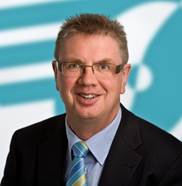 More Cycling – we have a strong case!
More Cycling – we have a strong case!
by Dr. Bernhard Ensink, Secretary General of European Cyclists’ Federation and World Cycling Alliance
More cycling helps to build inclusive, safe, sustainable cities and human Settlements.
More cycling helps to create low carbon mobility systems all over the world. If e.g. the levels of cycling in the European Union were equivalent to those found in Denmark, one of the European forerunner cycling countries, the bicycle use would help achieve 12 to 26% of the 2050 EU target reduction set for the transport sector, our study on quantifying CO2 emissions concludes. And more cycling saves additionally CO2 emissions as cycling is a good feeder for urban and regional public transport systems.
More cycling means that more people, cities and countries from all over the world benefit more from the positive impact cycling has on transport, environment, health, energy resources, the economy and human rights, as our president Manfred Neun shows in e.g. “Active Mobility – Achieving human rights through cycling”. For what reason ever authorities and the private sector invest in cycling – people and the planet will additionally gain all the other benefits of cycling. Cycling is a real city changer! Therefore we signed this year with UN-Habitat a Memorandum of Understanding: “Both parties will advocate for better recognition within city plans and policies of the importance and benefits of cycling as a mode of transport.”
I am curious to learn at the UN Summit on the 23rd of September how more cycling as part of the solution for global challenges is perceived meanwhile by the UN community. In any case we will go on with collaborating worldwide and organizing international cyclingsummits. We have a strong case! The European Cyclists’ Federation (ECF) and the World Cycling Alliance (WCA) are ready to continue and to intensify their work for cycling as a means of transport – for the benefit of all people.
Contact us and be welcome at our next cycling summit, the Velo-city conference in Nantes (France; June 2015).
To read all posts on the transport blog, please click here.